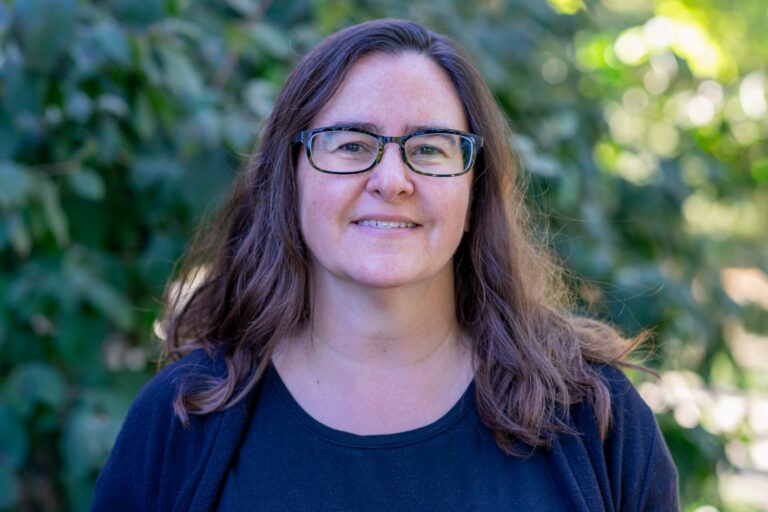Shawn Loewen became enamored with languages at age 13 when his parents hired a private tutor to teach him Spanish. Despite his passion for being multilingual, he knew he couldn’t make a living as a professional language learner. But he knew he could teach.
A Professor of Second Language Studies, Loewen came to Michigan State University in 2005 to join the faculty in the Department of Linguistics and Germanic, Slavic, Asian, and African Languageswho are committed to the study and teaching of second languages. Today, he’s leading courses on second language acquisition and quantitative research methods. He is especially interested in the intersection of technology and language learning. Most recently, he’s examined the effectiveness of popular apps and online platforms that deliver language lessons for free or by subscription.
“Millions of people are studying languages on these apps, and as teachers and researchers of second language acquisition, we have no idea what’s really happening learning-wise,” he said. “I wanted to find out and to gather some data.”
Speaking of Apps
Like many teachers and language specialists, Loewen was intrigued by the ads and assertions made by the various language apps. He also wondered if they were gimmicky, or made claims they possibly couldn’t fulfill.
With more apps than ever attracting language enthusiasts, Loewen narrowed his research to two of the most popular: Duolingo and Babbel. He also took a look at Busuu. As a strong proponent of second language learning, Loewen was pleased by the number of users claimed by each app: Duolingo at 25 million a month, Babbel with a million or more subscribers, and Busuu with 90 million registered users. Correspondence-type learning like Rosetta Stone also draws loyal followers.
If you teach people explicitly to memorize vocabulary and grammar rules, most people will learn that,” he said. “But it’s much harder to take that knowledge and translate it into the ability to use language — to speak it, understand what you’re hearing, and respond in an appropriate way.
Professor Shawn Loewen
Loewen started his quest with a small-scale study of Duolingo. Nine participants studied Turkish for a semester using Duolingo, then took MSU’s Turkish 101 exam.
“The good thing was, we all learned more than we knew at the beginning,” Loewen said. “Nobody knew any Turkish to start with. Everybody knew some things at the end. But nobody was able to use the language very communicatively.”
Loewen’s second project examined Babbel and spanned 12 weeks. He recruited 83 undergraduates to study Spanish for 10 minutes a day using the app. Most had little to no experience with the language; others had some familiarity by taking high school classes or by simply living in the United States. He administered pre- and post-tests on grammar and vocabulary, as well as oral proficiency exams that followed guidelines by the American Council of Teachers of Foreign Languages. Of the original 83 participants, 54 completed the study.
Loewen initially discovered that very few people studied 10 minutes a day or even an hour a week. As expected, almost everyone improved on grammar and vocabulary. But unexpectedly, almost 60 percent of participants improved in oral proficiency using Babbel.
“If you teach people explicitly to memorize vocabulary and grammar rules, most people will learn that,” he said. “But it’s much harder to take that knowledge and translate it into the ability to use language — to speak it, understand what you’re hearing, and respond in an appropriate way. I was really surprised that so many people improved.”
Building Upon Classroom Instruction
Although they’ve carved out a niche, Loewen doesn’t foresee language apps becoming commonplace in instructional contexts. While mobile apps are convenient, Loewen said nothing replaces the classroom and human interaction when learning and retaining second language skills.
Loewen concurred that hybrid classes can balance the best elements of online and classroom learning. Face-to-face instructional time can be reserved for communication-oriented activities, while grammar, vocabulary, and drills can be done off-site and on devices. Classroom learning also can be supplemented with synchronous video chat or interactive sessions via the Internet that connect students with native speakers worldwide.
If you’re going to use an app, by all means, do. But it’s also good to have opportunities where you can interact. For me, I think the bulk of instruction is better in the classroom.
Professor Shawn Loewen
There are so many possibilities to communicate with people and learn languages through the Internet,” Loewen said. “I think that’s really exciting, and it means that you don’t necessarily have to leave East Lansing to talk with a native speaker.”
At the end of it all, Loewen conceded that yes, you can learn languages through apps and online systems. His caveat? Have realistic expectations of what you can achieve.
“They’re especially good for learning vocabulary and phrases,” he said. “And I think they’re better for beginning to low-intermediate students. So if you’re going to use an app, by all means, do. But it’s also good to have opportunities where you can interact. For me, I think the bulk of instruction is better in the classroom.”


